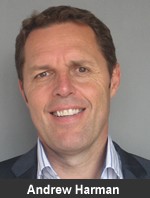 The next 12-18 months will be a pivotal period for the comms industry as customers decide whether IP will form a fundamental part of their future communications, according to Jennifer Jones, Sales, Operations and Marketing Director, BT Wholesale.
The next 12-18 months will be a pivotal period for the comms industry as customers decide whether IP will form a fundamental part of their future communications, according to Jennifer Jones, Sales, Operations and Marketing Director, BT Wholesale.
The SME market for connectivity is undergoing a period of unprecedented transformation and according to Jones a perfect storm is brewing, driven by consumer trends and end user expectations and a revolution in how businesses communicate. This has created a new dynamic that presents big opportunities and challenges for all those involved, whether a customer or a supplier. "Most companies face similar challenges, such as how to become more efficient but maintain service levels, how to innovate cost-effectively and how to find smarter ways of working," said Jones. "At the same time, employees have become used to a fast multi-device experience during their leisure time and expect 24/7 access while moving seamlessly from smartphone to tablet to PC, from work to home and back again."
Meanwhile, noted Jones, fibre broadband and Ethernet, the game changers for cloud services, are rolling out at pace. BT's fibre broadband is in reach of more than 16 million UK premises and in 2012/13 BT Wholesale saw its installed Ethernet circuits grow by 63 per cent. "These connections have the reliability and speed required for the simultaneous use of communications applications across multiple devices and desktops," added Jones. "Smart businesses can see what these capabilities can bring in terms of quick growth, flexible and collaborative working and lower operating costs. Many more will follow."
BT Wholesale has been gearing up for this IP revolution for a number of years, investing time and resources to create hosted communications solutions (many offered on a pay-as-you-grow basis) that expand the IP voice portfolio and blend with the company's data and broadband products. "No matter what pace of change SMEs want to move at from their TDM base and other assets, for most, the IP path leads to where there is most to be gained," added Jones. "The appetite for embracing the next step in business connectivity is clear."
IDC research indicates that SME spend on hosted communications solutions is expected grow 18 per cent by next year, in contrast with lines and mobile calls which are predicted to fall by seven and 20 per cent respectively. "Customers looking for hosted communications are generally at the start of a journey in their strategic development, and we have the collective opportunity to take them on the road while securing sustainable, predictable and margin-rich business," stated Jones.
"Most enter that journey at step one, looking for ways to manage and reduce telephony costs inspired by the promise of the cloud. Beyond this, they typically start to look at ways to build on and apply their investment to IT efficiency, increasing employee productivity through enabling mobility and collaboration, for example, and improving business agility by integrating apps, processes and communications."
In an industry where traditional connectivity margins continue to be squeezed, the ability to build a relationship with SME customers and get further into their value chain is an attractive prospect, supporting them as they gain in confidence and want to do more with their voice and data. "With the right proposition, becoming a trusted provider of hosted communications gives comms providers the opportunity to secure a more predictable margin over 24-36 month contracts," added Jones.
While some channel customers are happy to build their own capabilities, BT Wholesale is seeing significant demand from those keen to enter the IP space but who are unsure about whether to invest in hosted communications platforms given the pace of change in the market. Key issues include concerns over whether investments will become obsolete in a matter of years and the reliability of potential partners. "But they're also convinced of the benefit of keeping at least a foot in the door with IP technology, knowing full well that the fundamental technology swap over time from TDM to IP opens the market for a whole new host of competitors to join the party," pointed out Jones.
BT Wholesale is on a mission to be the 'wholesaler of choice' and has recognised that in order to carry forward its stated intent a change of approach is required. "Backed by our expert consultancy we're increasingly adopting a sell-through model and, by working closely with our channel customers, we are improving our knowledge of what it will take to win SME customers," explained Jones. "This mix is the perfect combination for in-depth discussions leading to practical and future proofed solutions that can be implemented, used, maintained and developed successfully."
According to Jones, it's all about understanding the business drivers and together establishing a more sticky SME customer solution. "Our customers are responding enthusiastically to this collaborative approach and they are keen to work with us to jointly agree the solution that will win the contract," she said. "We have a platform in the form of integrated access but must work in this way to maximise its potential."
In the main, SMEs come to the cloud with any number of problems to contend with. Bigger companies have a legacy environment they can't afford to mothball overnight, while small companies may have no in-house IT expert and are too time-poor to manage the change. "The integration of protocols, existing technologies with new apps, platforms and equipment may be too much of a headache to take the plunge," noted Jones. "But we've designed our hosted communications services with this in mind, offering the flexibility for the channel to sell something that's exactly the right fit for the end customer, whether at step one or step four of their journey to IP."
For resellers that already help SMEs advance their voice and data plans the move to hosted communications will feel like a natural step, according to Jones. "With the right approach, hosted communications has the potential to increase the value of a customer by up to five times, if not more, while securing trusted partner status and seeing the benefit of more reliable margins," she commented. "While the perfect storm will calm in time, the rise of hosted communications powered by IP means that for companies of all sizes the cloud is here to stay."•

 Oak joint CEO Phillip Reynolds believes there is a lot of life left in traditional telephone systems but he's no Luddite when it comes to the Internet and believes his latest web-based call management solution could be Oak's best innovation yet.
Oak joint CEO Phillip Reynolds believes there is a lot of life left in traditional telephone systems but he's no Luddite when it comes to the Internet and believes his latest web-based call management solution could be Oak's best innovation yet. When Annodata's joint Managing Director Andrew Harman announced the appointment of two key hires this summer his intention to create a £100 million turnover business over the coming two years received a strategic boost of significant proportions.
When Annodata's joint Managing Director Andrew Harman announced the appointment of two key hires this summer his intention to create a £100 million turnover business over the coming two years received a strategic boost of significant proportions. By Elvire Gosnold, Director, Blabbermouth Marketing: Forget TV advertising and winning trips to the moon, it is the modest proposal document that needs your attention. In the heat of the excitement of a successful client visit and the prospect of a new business contract it is easy to rush through the proposal and pricing in order to make sure your prospect receives the details required to sign on the dotted line in a timely manner.
By Elvire Gosnold, Director, Blabbermouth Marketing: Forget TV advertising and winning trips to the moon, it is the modest proposal document that needs your attention. In the heat of the excitement of a successful client visit and the prospect of a new business contract it is easy to rush through the proposal and pricing in order to make sure your prospect receives the details required to sign on the dotted line in a timely manner.